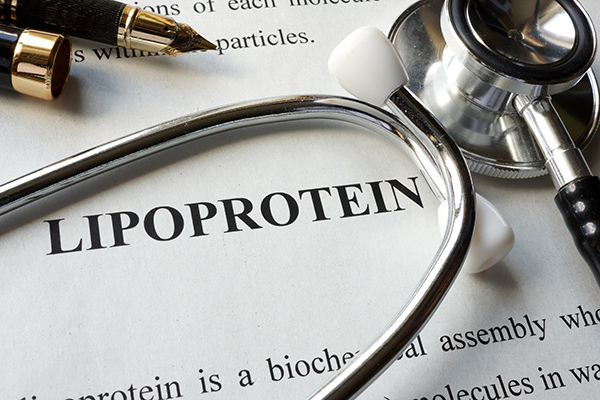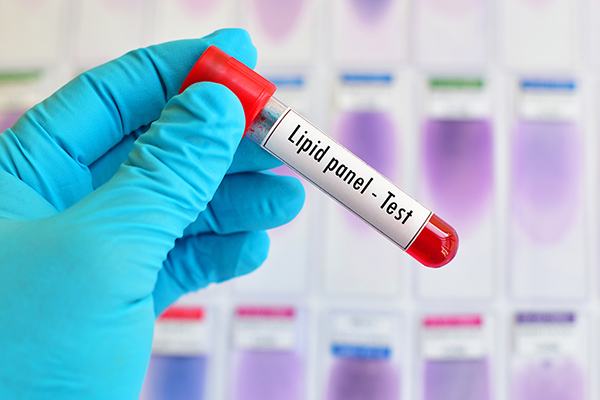Feature | ACC.19 Prevention Science Roundup
From the main hall with its Late-Breaking Clinical Trials and Featured Clinical Research to abstract sessions and poster sessions, the pulse of the Ernest N. Morial Convention Center in New Orleans was science you can use today for your patients. Here's a roundup of some prevention highlights.
Blood Pressure Lowering

Insights for optimizing treatment of blood pressure (BP) in black Africans and in the elderly came from two late-breaking clinical trials.
The CREOLE trial in black Africans found two-drug combinations with amlodipine were superior to those with perindopril for lowering BP. While its known that two-drug combinations are usually required for BP control in these patients, the most effective combination has not been established. Evidence shows that diuretics or calcium-channel blockers are the most effective monotherapies.
For the study, Dike Ojji, PhD, et al., randomized 728 patients with hypertension to daily amlodipine (5 mg) plus hydrochlorothiazide (HCTZ; 12.5 mg); amlodipine (5 mg) plus perindopril (4 mg); or perindopril (4 mg) plus HCTZ (12.5 mg). After two months, the doses were doubled.
The primary endpoint – the mean change in 24-hour ambulatory systolic BP between baseline and six months – was reduced by 18.1 mm Hg with amlodipine plus perindopril and by 17.1 mm Hg with amlodipine plus HCTZ vs. 14.2 mm Hg with perindopril plus HCTZ. Adjusted results showed a significant difference with amlodipine plus HCTZ (p=0.03) and amlodipine plus perindopril (p=0.04).
Greater reductions were seen in office systolic BP at two, four and six months with amlodipine plus HCTZ or amlodipine plus perindopril.
In the INFINITY study, a lower 24-hour systolic BP of 130 mm Hg, vs. 145 mm Hg, was associated with significantly less accumulation of harmful brain lesions at three years in elderly patients.
However, the reduction in brain lesions, visible on MRI scans, did not translate to a significant improvement in mobility and cognitive function. Researchers said it is likely that three years was too short a time for such benefits to become apparent.
INFINITY is the first study to demonstrate an effective way to slow the progression of cerebrovascular disease. It is also unique in its use of 24-hour ambulatory BP monitoring.
"I think it's an important clinical finding, and a very hopeful one for elderly people who have vascular disease of the brain and hypertension," said principal investigator William B. White, MD.
"With the intensive 24-hour blood pressure treatment we reduced the accrual of this brain damage by 40 percent in a period of just three years. That is highly clinically significant, and I think over a longer time period intensive reduction of the ambulatory blood pressure will have a substantial impact on function in older persons," as well, he said. A sensitivity analysis showed that 60 percent of patients maintained their target blood pressure throughout the full three years.
A reduction in major nonfatal cardiovascular events was also found in the intensive BP lowering group; patients in the standard BP lowering group were four times more likely to have an event.
The average age of the 199 study patients was 81 years and the average systolic BP was 150 mm Hg at baseline; all had evidence of some cerebrovascular disease on MRI scan. Half were randomized to standard and half to intensive BP control.
"The average 80-year-old without a major illness such as cancer or heart failure can expect to live about 13 more years, and if you cut back the accrual of vascular damage over the course of that timeframe it could substantially improve a person's quality of life," White said. "In addition, this benefit would likely be amplified in people with more severe or longer-duration hypertension."
ODYSSEY Outcomes and LP(a)

Is lipoprotein(a) an emerging target for cardiovascular event reduction in patients with an acute coronary syndrome? Findings of a subgroup analysis from the ODYSSEY Outcomes trial presented at ACC.19 suggests this may be the case. The main trial showed that alirocumab reduced LDL-C, LP(a) and cardiovascular events in post acute coronary syndrome patients.
In this analysis, the investigators, led by Vera Bittner, MD, FACC, jointly modeled the reduction in LDL-C and LP(a) in the alirocumab group. While LDL-C was the predominant driver of event reduction, 27 percent of the reduction in major adverse cardiovascular events was due to the reduction in LP(a). Bittner said that LP(a) appears to be a risk factor and especially at higher levels of LP(a) its reduction drives event reduction, and these findings justify larger trials. It appears that antisense mRNA drugs, like alirocumab, selectively reduce LP(a), also requiring further investigation.
Alcohol Abstinence and AFib

For patients with atrial fibrillation (AFib) who consumed moderate amounts of alcohol, abstinence from alcohol reduced AFib burden and rates of recurrence, along with improving symptom severity and BP control and weight loss.
Alcohol-AF, a prospective open-label trial conducted in Australia, randomized patients with paroxysmal AFib with a minimum of two episodes within six months or persistent AFib requiring cardioversion. The average alcohol intake was ≥10 standard drinks per week. Patients received comprehensive rhythm monitoring via an implantable loop recorder or existing pacemaker and the AliveCor® mobile phone app in conjunction with Holter monitoring.
In what the authors describe as a first-of-itskind trial, alcohol abstinence was associated with a 37 percent increase in AFib-free survival (118 vs. 86 days) and significantly lower AFib burden.
"This verifies what we believed to be true and have been recommending to our patients! It's terrific to now have science to back that statement up!" says ACC.org Editor-in-Chief Kim A. Eagle, MD, MACC.
Diet and Exercise

Xiaodong Zhuang, MD, PhD, et al., analyzed data from 14,000 people without AFib and identified 1,900 who developed AFib during 22 years follow-up. Participants who ate a low carbohydrate diet were 18 percent more likely to develop AFib than those with moderate carbohydrate intake and 16 percent more likely than those with high carbohydrate intake. "Low carbohydrate diets were associated with increased risk of incident AFib regardless of the type of protein or fat used to replace the carbohydrate," Zhuang noted.
Another study found that people who ate an energy-rich breakfast and watched less TV had less plaque and arterial stiffness, according to Sotirios Tsalamandris, MD, et al. Arterial stiffness and more plaque were found in 15 and 28 percent of participants skipping breakfast, 9.5 and 26 percent of those eating a low-energy breakfast and 8.7 and 18 percent of those eating a high-energy breakfast. Participants who watched >21 hours of TV per week were twice as likely to have plaque buildup.
Seamus P Whelton, MD, MPH, et al., demonstrated that physical fitness is a better predictor of a longer lifespan than the number of cardiovascular risk factors among people >70. Fitness was assessed with an exercise stress test in >6,500 participants, who were followed for 10 years. "People who aren't exercising or are sedentary would likely benefit from starting a routine of low- to moderate-intensity exercise, though they should talk with their physician first," Whelton said.
In a study of 1,172 former National Football League players, approximately 12 percent had left ventricular hypertrophy (LVH), which appeared to be associated with hypertension. Players with severe LVH had significantly higher blood pressure. "The findings underscore the need for former players and their doctors to keep an eye on any cardiovascular risk factors and work to keep blood pressure in a healthy range," said Genevieve Smith, PhD.
Yaoshan Dun, MD, PhD, et al., found that cardiac rehabilitation patients who practiced high-intensity interval training (HIIT) gained significant benefits over those performing moderate exercise. After 12 weeks, patients performing HIIT lost four more pounds of body fat, gained a pound and a half more lean muscle mass, and trimmed an inch more off their waists. "These findings support the use of HIIT as an essential treatment tool to improve body composition in heart attack patients enrolled in early outpatient cardiac rehabilitation," Dun said.
Hyperlipidemia in Pregnancy

A retrospective analysis by Dipika J. Gopal, et al. of 5,100 women who gave birth and attended a postpartum visit within 180 days of delivery, found that only 22 percent had lipid screening before the visit. Of those, 7 percent had elevated total cholesterol and 13 percent had elevated triglycerides.
According to the investigators, these results demonstrate a missed opportunity to counsel and treat women at high risk of long-term complications from maternal hyperlipidemia and address possible effects on fetal health.
Smartphone Technology

Robert Avram, MD, et al., correctly identified diabetes using a deep learning algorithm with a smartphone app that measures heart rate with the phone's camera, in >72 percent of 54,269 participants. Combining the app-based screening with common diabetes risk factors, diabetes detection rose to 81 percent.
Bimal R. Shah, MD, et al., reported that using a smartphone app to monitor blood pressure (BP) in 708 participants resulted in 5.4 mm Hg systolic BP decrease and 3.5 mm Hg diastolic BP decrease. With each reading, the app provided healthful living tips and connection with a health coach. "With longer follow-up and further coaching, we expect more participants will see durable blood pressure reductions," said Shah.
Keywords: ACC Publications, Cardiology Magazine, ACC Annual Scientific Session, ACC19, Acute Coronary Syndrome, Alcohol Abstinence, Blood Pressure, Blood Pressure Monitoring, Ambulatory, Atrial Fibrillation, Amlodipine, Cardiac Rehabilitation, Cerebrovascular Disorders, Cognition, Diuretics, Calcium Channel Blockers, Electric Countershock, Electrocardiography, Ambulatory, Heart Rate, Hydrochlorothiazide, Hypertension, Heart Failure, Drug Combinations, Hypertrophy, Left Ventricular, Lipoprotein(a), Perindopril, Magnetic Resonance Imaging, Exercise Test, Pharmaceutical Preparations, Outpatients, Pregnancy, Quality of Life, Neoplasms, Prospective Studies, Research Personnel, Retrospective Studies, Risk Factors, RNA, Messenger, Vascular Stiffness, Weight Loss
< Back to Listings

